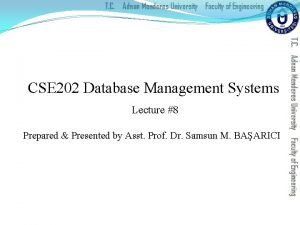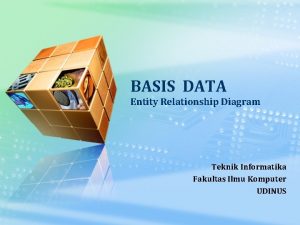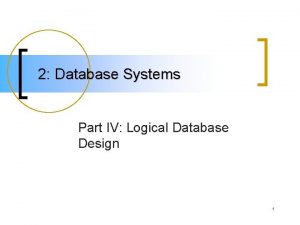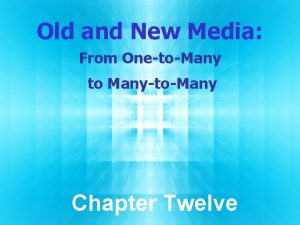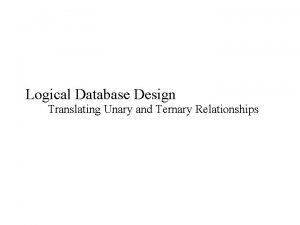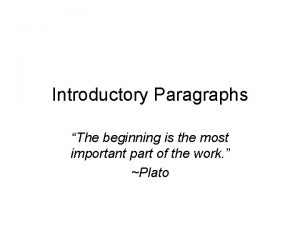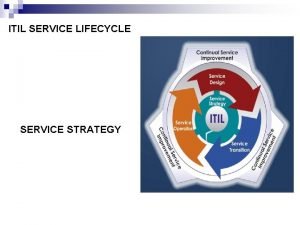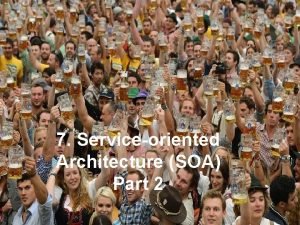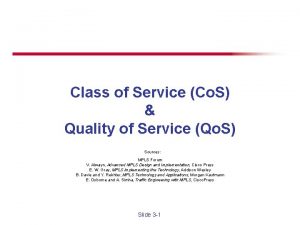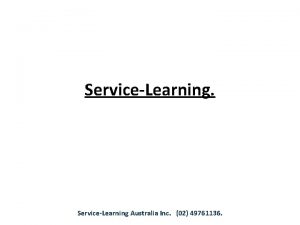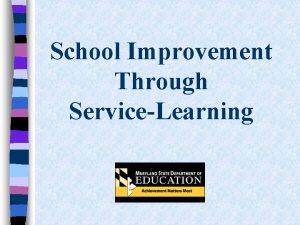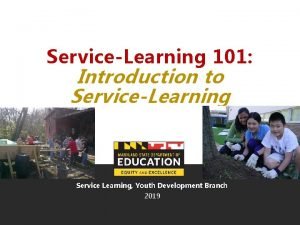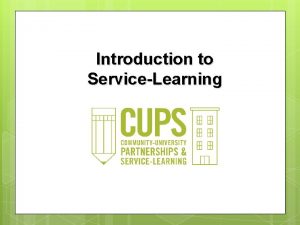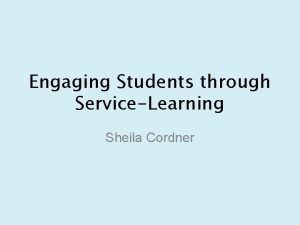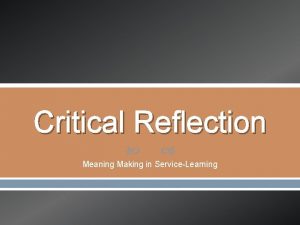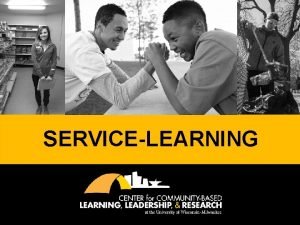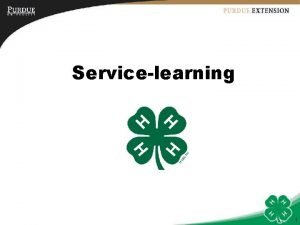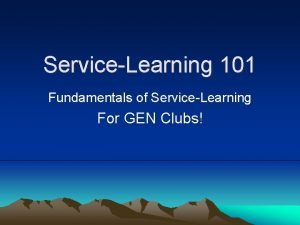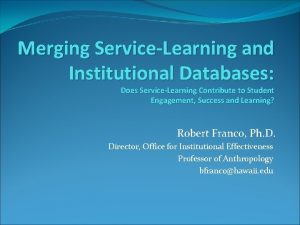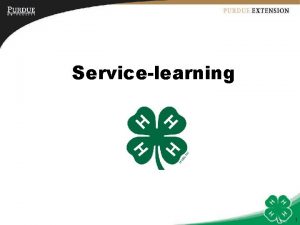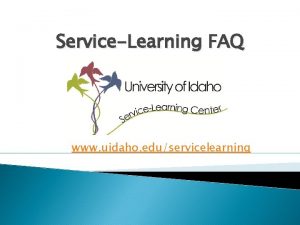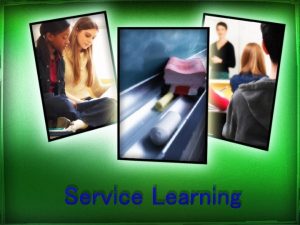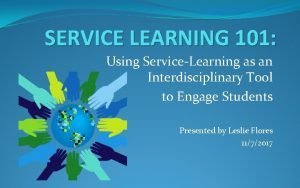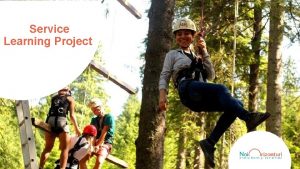Introduction to Service Learning What is ServiceLearning Many


















- Slides: 18

Introduction to Service Learning

What is Service-Learning? Many definitions: • “A form of experiential education in which students engage in activities that address human and community needs together with structured opportunities intentionally designed to promote student learning and development. ” » Jacoby, 1996

• Any carefully monitored service experience in which a student has intentional learning goals and reflects actively on what he or she is learning throughout the experience » National Society for Experiential Education

• “…method under which students learn and develop through active participation in thoughtfully organized service experiences that meet actual community needs that are integrated into the students’ academic curriculum or provide structure time for reflection that enhance what is taught in school by extending student learning beyond the classroom and into the community. ” » Corporation for National Service

Service and Learning Typology Sygmon, 1994 Service-LEARNING SERVICE-learning Learning goals primary Service outcomes secondary Service outcomes primary Learning goals secondary service learning SERVICE-LEARNING Service and learning goals completely separate Service and learning goals of equal weight Each enhances other for all participants

Experiential Learning Continuum Who is BENEFITTING? Recipient Provider What is the main FOCUS? Service Learning SERVICE-LEARNING COMM. SERVICE VOLUNTEERISM FIELD EDUCATION INTERNSHIP Adapted from Furco, 1996

Volunteerism • Primary emphasis on service provided • Primary beneficiary is service recipient • “inherently altruistic”

Community Service • Primary focus on service provided • May involve more structure than volunteerism • As service becomes integrated with formal course work, moves closer to center of continuum

Internships • Student the primary beneficiary • Focus on student learning – Goal is to acquire skills and knowledge

Field Education • Service activities related to but not fully integrated into academics • Focus on maximizing student learning

Service Learning • Equal benefit to provider and recipient of service • Equal focus on service and learning • Must have academic context that ensures – Service enhances learning – Learning enhances service

Examples: What might each look like? • Volunteer at hospital • Internship at hospital • Service learning at hospital

“Reciprocity” • Equal benefit and investment • Every individual, organization, and entity involved functions as both teacher and learner • (From: http: //www. compact. org/aboutcc/glossary. html#reciprocity)

Service learning courses • integrate service and academic course content – each significantly informs and enhances the other • involve planned benefits for community partner and students • service addresses a need and follows processes that are mutually agreed upon by partner agency and instructor • actively guide and support students in critical reflection regarding integration of service and academic course content

Structured Reflection (Critical Analysis) • Connects the experience to the coursework • Provides opportunity for students to share project progress and concerns on ongoing basis • Facilitates exchange of relevant information between students, instructor and community • Provides safe space for grappling with emotions that arise from service experience • http: //www. compact. org/disciplines/reflection/faq/structured-part 2. html

Benefits of Service Learning For the Community • Enhances positive relationships with the college • Provides awareness-building of community issues, agencies, and constituents • Contributes to positive exposure in the community • May help to secure outside funding

For the Institution • Facilitates teaching, research, and program development • Increases institution’s awareness of societal issues as they relate to academic areas of interest • Engages faculty and students in local and state community issues • Provides opportunities to extend College’s knowledge and resources

For the Student • Applies concepts from the classroom to your service • Provides platforms to analyze and discuss civic values • Increases your sense analytical skills • Develops meaningful involvement with the local community
 Cuadro comparativo e-learning y b-learning
Cuadro comparativo e-learning y b-learning Many sellers many buyers
Many sellers many buyers Er diagram
Er diagram Convert conceptual model to logical model
Convert conceptual model to logical model Erm erd
Erm erd Unary many to many
Unary many to many Contoh erd many to many
Contoh erd many to many Unary many to many
Unary many to many Many-to-many communication
Many-to-many communication Sqlbi many to many
Sqlbi many to many Example of unary relationship
Example of unary relationship Many sellers and many buyers
Many sellers and many buyers Middle school introduction paragraph examples
Middle school introduction paragraph examples Itil lifecycle stages
Itil lifecycle stages Itil lifecycle management
Itil lifecycle management Itil 7 step improvement process
Itil 7 step improvement process Self perceived service role
Self perceived service role Evolution of soa
Evolution of soa Class of service vs quality of service
Class of service vs quality of service





